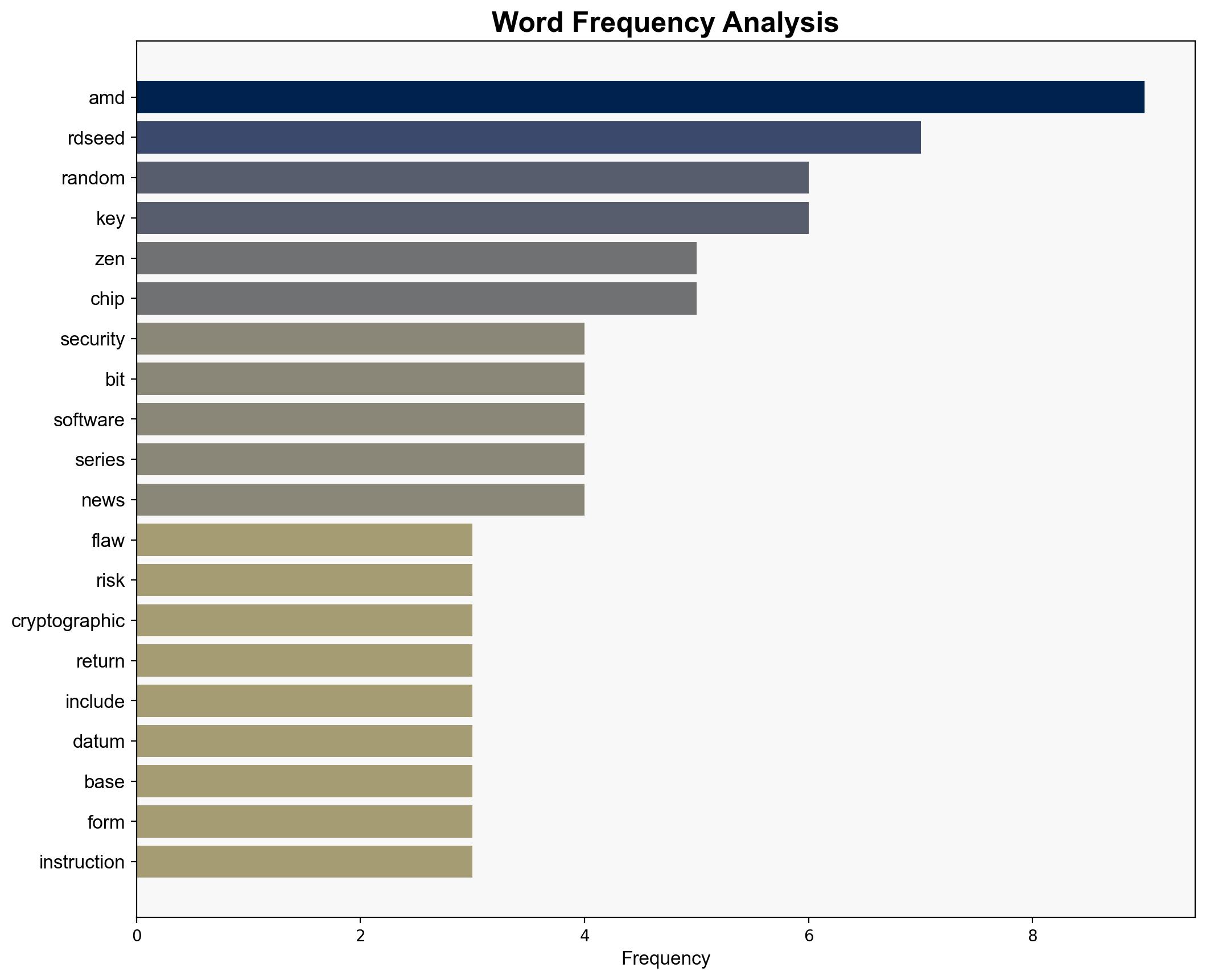AMD confirms some Zen 5 CPUs have a worrying security flaw that could put users at risk – TechRadar
Published on: 2025-11-04
Intelligence Report: AMD confirms some Zen 5 CPUs have a worrying security flaw that could put users at risk – TechRadar
1. BLUF (Bottom Line Up Front)
The most supported hypothesis is that the security flaw in AMD’s Zen 5 CPUs poses a significant risk to cryptographic operations, potentially allowing attackers to reconstruct private keys and compromise encrypted data. Confidence in this assessment is moderate due to the technical complexity and potential for mitigation. Recommended action includes immediate deployment of software fallbacks and microcode updates to mitigate risks.
2. Competing Hypotheses
1. **Hypothesis A**: The security flaw in AMD Zen 5 CPUs significantly compromises cryptographic operations, allowing attackers to reconstruct private keys and access encrypted data.
2. **Hypothesis B**: The security flaw, while present, is unlikely to be exploited at scale due to existing mitigation strategies and the complexity of executing such an attack.
Using the Analysis of Competing Hypotheses (ACH) 2.0, Hypothesis A is better supported due to the detailed description of the flaw’s impact on cryptographic integrity and the urgency of AMD’s response. Hypothesis B is weakened by the reliance on future mitigation effectiveness and the assumption that attackers will not exploit the flaw.
3. Key Assumptions and Red Flags
– **Assumptions**: It is assumed that the flaw can be effectively mitigated through software updates and microcode patches. There is also an assumption that attackers have the capability to exploit the flaw if unmitigated.
– **Red Flags**: The lack of detailed information on the flaw’s exploitability and the effectiveness of proposed mitigations raises concerns. The potential for underestimating the speed and capability of threat actors is a blind spot.
4. Implications and Strategic Risks
The flaw could lead to significant economic and cybersecurity implications if exploited, including data breaches and loss of consumer trust. The risk of cascading threats is high if attackers develop automated tools to exploit the flaw. Geopolitically, the flaw could be leveraged by state actors to target critical infrastructure or sensitive data.
5. Recommendations and Outlook
- Immediate deployment of software fallbacks and microcode updates to mitigate risks.
- Conduct a comprehensive risk assessment to identify vulnerable systems and prioritize patching efforts.
- Enhance monitoring for unusual activity that may indicate exploitation attempts.
- Scenario-based projections:
- Best Case: Effective mitigation reduces risk to negligible levels.
- Worst Case: Widespread exploitation leads to significant data breaches and economic impact.
- Most Likely: Partial mitigation reduces risk but does not eliminate it entirely.
6. Key Individuals and Entities
– AMD (Advanced Micro Devices)
– TechRadar (Source of the report)
7. Thematic Tags
national security threats, cybersecurity, cryptographic vulnerabilities, risk management





